ASH Webinar on Endgame for Tobacco: The World We Want
June 11, 2020
Statement from Chris Bostic, Deputy Director for Policy at ASH
The goal of Project Sunset: To phase out the sale of commercial combustible tobacco products. This is a bit different from endgame initiatives you’ve seen in the past, in that we are not seeking to find that one perfect policy. There are a variety of policies that can be employed. We are focused on the goal, not the method.
Let me start by pointing out something we don’t often talk about. I believe that one of the biggest successes for the tobacco industry was convincing the world that the tobacco epidemic is caused by people who smoke. “If only those darn smokers would quit. But until they do you can’t blame us for supplying a demand.” But of course they create the demand, partially through marketing but mostly by changing the chemistry of the cigarette to be as addictive as possible. If a new product came on the market tomorrow that was unnecessary, highly addictive and killed when used as intended, it would be immediately removed from shelves, and the directors of the company behind it would likely be prosecuted. But we’ve given the tobacco industry a pass and came to accept massive unnecessary death as part of the fabric of society.
A bit of background about how we arrived at Project Sunset. As you heard earlier, FCTC interventions are almost entirely demand-based; the only supply side obligations are related to illicit trade and sales by minors. Countries that have fully implemented the FCTC – and the U.S. is not on this list – have seen dramatic reductions in smoking prevalence, but there appears to be a limit on what demand-reduction tactics can accomplish. There are seven countries – we call them the Aspire countries – that have set lofty goals to reduce prevalence to historic lows by certain dates. The targets and dates vary, but the countries have one thing in common – none are on track to meet their goal. These are countries that top the list when it comes to the political will to end the tobacco epidemic, but they can’t do it purely by focusing on the consumer.
It might be most helpful if I get out in front of a few frequently asked questions. The first one we always get is, is this legal? The short answer is yes, governments have the right to regulate or ban the sale of products. We’ve done it many times, with lead paint, with leaded gasoline, with chlorofluorocarbons, with asbestos. And more specifically in the U.S., the 2009 Family Smoking Prevention and Tobacco Control Act explicitly gives the states the authority to ban the sale of tobacco products. Many states pass on that authority to cities and counties.
Another frequently asked question: why all combustible tobacco products and not just cigarettes? The occasional cigar isn’t that dangerous, right? The reason is that the industry has demonstrated that it will use every loophole possible to maintain widespread addiction and daily use. When flavored cigarettes were banned – other than menthol – in 2009 we saw an avalanche of candy-flavored “little cigars.” If we give them a sliver of opportunity, the industry will find a way.
The next question we always get is, “doesn’t this infringe on individual liberty? People have the right to choose to do anything that doesn’t hurt others.” This is a solid argument with one fatal flaw – for the vast majority of people who smoke, the choice has been taken away through addiction. Most want to quit, wish they had never started, have tried unsuccessfully to quit, and are desperate that their children don’t take it up. And nearly all became addicted as children, when it was impossible for them to consent to addiction. I’m not certain even an adult can consent to a lifetime of addiction. We’ve had calls and emails from people who smoke begging us to get this done in their communities because they’re sure if it wasn’t in their face every time they walked into a store or gas station they could finally quit. And our own polling has shown that at least half of smokers support Project Sunset. If we explain that there will be access to cessation support and a phase-in period, that number jumps higher.
And to return to that definition of liberty, that someone can do anything they want so long as it does not harm others. Hard to argue with that. But how can it be applied to selling cigarettes?
And now to the big one: what about e-cigarettes. Most of the people on this call work in public health, so I don’t need to explain the controversy about the place of e-cigarettes in the tobacco epidemic. So here is our stance on e-cigarettes – we can’t let the argument prevent us from getting rid of what we all agree is the most dangerous consumer product in history. ASH is fortunate to have two steering committees of brilliant public health professionals – one domestic, one global – to help us find the right path forward for Project Sunset. I’m proud to say that both committees include both harm reductionists and anti-e-cig folks. We can all agree on cigarettes.
So when a city council asks whether they should include e-cigarettes in a sales ban, our response is: do whatever you must to get rid of cigarettes. If it’s politically more feasible to include e-cigs, go for it. If it’s the reverse, don’t. They can always come back later and consider adding other nicotine products, but in the meantime they’ve gotten rid of the product responsible for virtually all tobacco-related deaths in the U.S. and most of the world.
In the U.S., we are under no delusion that this will happen at the federal level. The tobacco industry has a long-term lease on Congress through campaign donations. Project Sunset will start in small cities, then big cities and counties, then states. Some states may never do it, but they will be pressed to at least do more than they are. Basically, we can move the center. And as you know, this is no longer hypothetical. Two cities in California – Beverly Hills and Manhattan Beach – have passed their Sunset ordinances and the sales bans will come into effect on January 1, 2021. Other cities are seriously considering it, and at least one is in the process of drafting their bill.
I’d like to conclude by going over some of the major dos and don’ts for Project Sunset. If you’ve been on some of our other webinars you know that several countries temporarily banned tobacco sales during COVID lockdowns. Researchers from Cape Town University undertook a study to examine the effects of South Africa’s ban, which has yet to be lifted. They concluded that the negatives outweighed the positives, due to illicit trade, public anger and loss of public revenue. Let me stress that these researchers are tobacco control champions – I’ve known the lead author for years. We’re very fortunate to have these real-life experiments, and the South Africa experience does not undermine Project Sunset. But let me explain why.
The South African ban failed on two deal-breaker issues, and I don’t blame them because COVID didn’t give them the luxury of time to plan. The ban was implemented suddenly and immediately, and no cessation support was put in place. This left people who smoke no access to nicotine at all, and no time to put a quit plan into action. Phase-in time and access to cessation are two cardinal rules for Project Sunset legislation. We won’t work with a jurisdiction that refuses to follow these rules. And there is a factoid from that South African study that gives me tremendous hope. Sixteen percent of all smokers said that the sales ban had caused them to quit and they intended never to start again. Some undoubtedly have the best intentions but will fall off the wagon, but what other tobacco control intervention has even come close to that impact? If we can eliminate the negative externalities caused by those two failings, we can save millions of lives.
There’s one other “third rail” for Project Sunset that I’d like to mention. This campaign is about sales, not possession or use. We won’t work with anyone that wants to criminalize possession or use. The wrongdoer here is the tobacco industry, not people who smoke.
To watch the complete recording of this webinar, click here.
To visit our Webinar Series webpage, click here.








